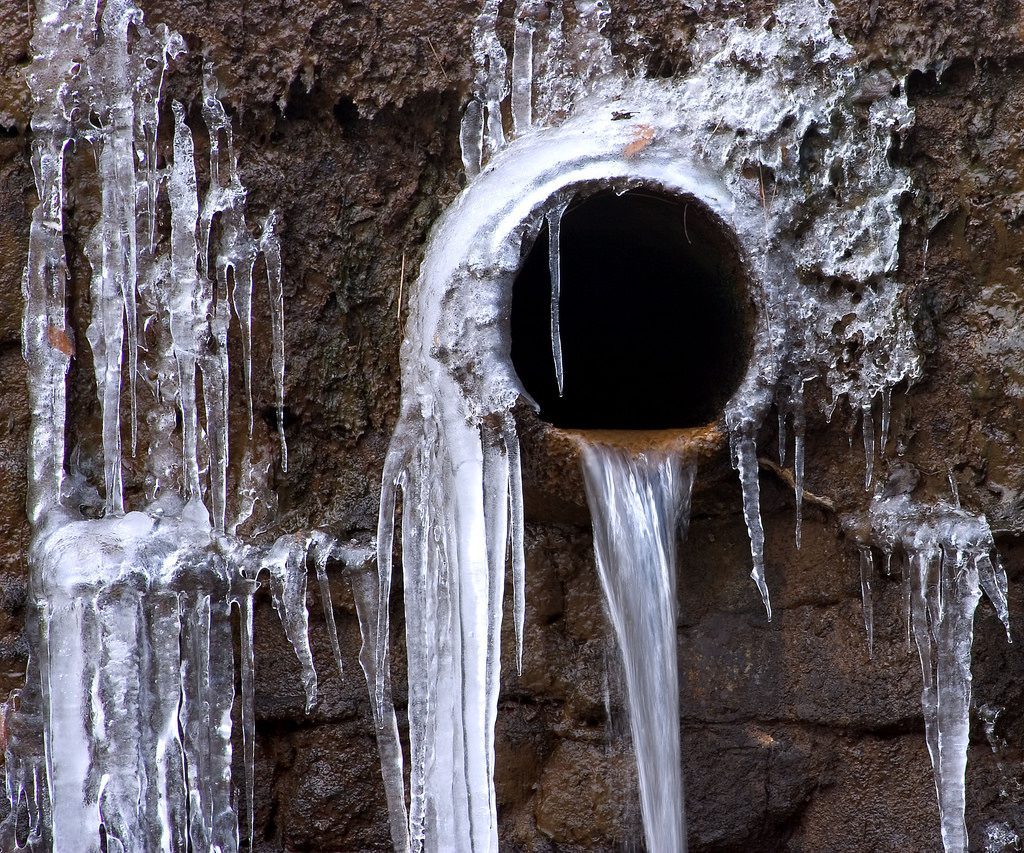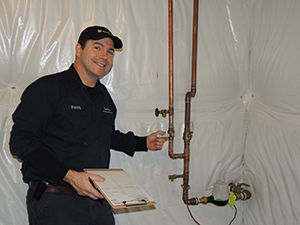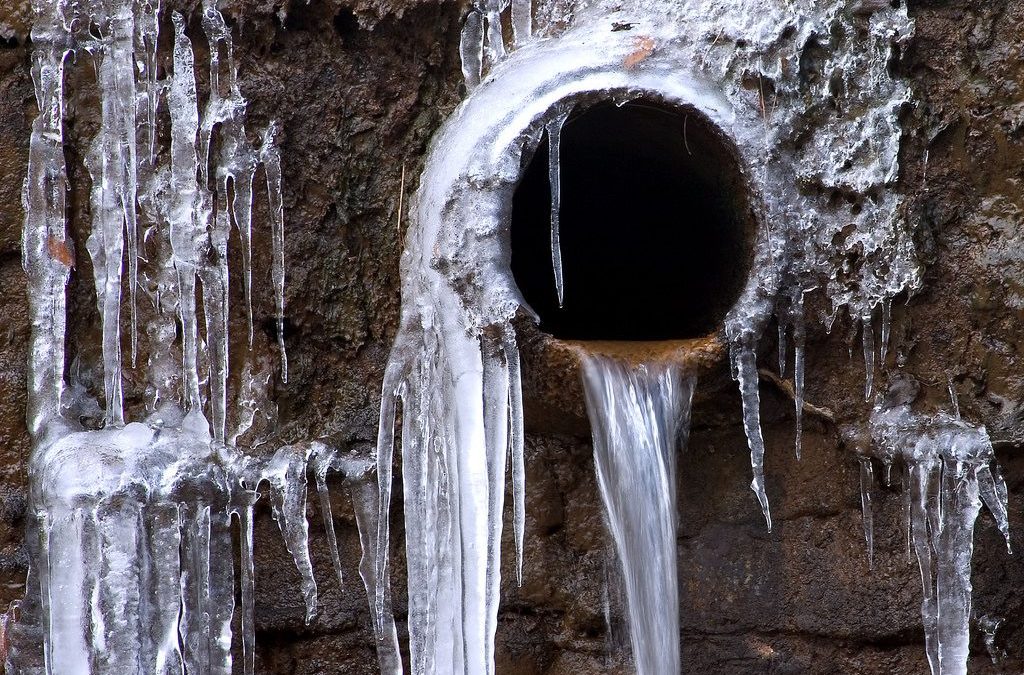Winter’s subfreezing temperatures can unleash a host of plumbing problems. A burst pipe is just one household calamity that can occur with the emergence of the annual cold season. In fact, in 2018, Illinois experienced more winter losses than any other state in the nation. Insurance claims for frozen pipes totaled more than 1,500 in the Land of Lincoln. One major insurance company doled out nearly $28,000,000 in payouts for winter-related losses in Illinois.
Frozen pipes are prevalent. Exorbitant repair costs can result if the pipes have ruptured. Fortunately, not all frozen water pipes burst. If you come across a frozen yet intact pipe, take quick action to thaw the pipe.
Logistics of Frozen Pipes
It is easy to understand why frozen pipes burst. The water in the pipe reacts to subzero temperatures, leading the water inside to expand as it turns to ice. No water pipe is designed to expand with a mass of ice. With no room in the pipe to accommodate the block of ice, the pipe breaks open.
Expanding ice contributes an unyielding 2,000 pounds (per square inch) of pressure inside the pipe, causing any type of pipe to break. A ruptured pipe has the capacity, per hour, to spill hundreds of gallons of water into the home. The homeowner is faced with a pricey water damage restoration bill, often totaling thousands of dollars.
Uninsulated pipes are most notorious for freezing, especially if they are located along an exterior wall, inside a cabinet under a sink that is located in close proximity to an outside wall or inside an unheated basement or crawl space. Pipes are most susceptible to freezing during cold snaps and when the season is in the clutches of a severe winter freeze.
What to Do When Finding a Frozen Pipe
1. Recognize a Frozen Pipe
Homeowners know when a pipe has frozen when, in the depths of a winter freeze, only a trickle of water escapes from an open faucet. Another indication of a frozen pipe in your home is when the toilet fails to refill after flushing.
2. Identify the Frozen Pipe
Frozen pipes can be identified in a few ways. A frozen pipe may bulge from the pressure inside. Oftentimes, an exposed frozen pipe is encapsulated in layers of ice and frost.
3. Shut Off the Water
Once you locate the frozen pipe, your first step should be to shut off the water supply that feeds that particular section of the plumbing; alternately, if your only option is to turn off the water to the entire house, do so. Water that is backed up behind the ice blockage will rapidly gush out of cracks in the plumbing when the ice eventually melts, leaving homeowners with a substantial, watery mess to clean up. Prevent the chaotic aftereffects of the thaw by temporarily shutting off the water supply.
Warning: Before you begin the thawing process, take note that using a propane torch or other open flame to warm the pipe is extremely dangerous. Not only do you risk a fire, but the flames will damage the pipes. Applying intense heat, such as that from a blowtorch, can prompt the water inside the pipe to boil and cause the pipe to explode.
4. Thaw Visible Frozen Pipes
An exposed pipe is one that is visible and not hidden behind a wall. When you begin the thaw, apply heat to the section of the pipe that is closest to the faucet and work your way toward the opposite end of the pipe. Following this strategy ensures the water flows out unobstructed, rather than building up behind the ice blockage and uncontrollably spewing out later.
A handful of tried and true methods exist to melt the ice in a frozen pipe:
Electrical pipe heat tape is a heated wrap intended to cover the frozen section of a pipe. Wrap the pipe with the heat tape and plug in the unit. The electrical heating component gradually emits warmth that melts the ice. The heat tape temperature may be regulated with its built-in thermostat.
When you find the frozen pipe to be located under the kitchen or bathroom sink, grab a portable heater and position it on the floor, its heat aimed toward the frozen segment of the pipe.
Heat lamps or incandescent heat lamps also are functional devices you can use to melt the ice inside a frozen pipe.
The simplest method of thawing frozen pipes involves directing the heat from a hair dryer toward the frozen part of the pipe.
5. Thaw Pipes Behind Walls
Challenging as it may be, thawing pipes situated behind walls or the ceiling can be readily accomplished. The path of least resistance includes turning up the heat inside the home and waiting for the frozen pipe to thaw.
If you are handy with tools, cut out the section of drywall or ceiling in front of the frozen pipe. Then, use any of the above-mentioned means for thawing an exposed pipe.
An infrared heat lamp works wonders, and you don’t need to cut out a section of the drywall. Place the lamp in front of the wall where you suspect the frozen pipe to be. The warmth from the lamp will melt the ice blockage inside the pipe.
Consult a Plumber
When thawing a frozen pipe is beyond your limits, consult a professional plumber. Good Work Plumbing and Electrical is a local plumbing contractor ready to tackle a homeowner’s worst-case plumbing scenario. From burst pipes to clogged drains and toilet repairs to water heater repair, Good Work Plumbing and Electrical is prepared to fix any plumbing issue with speed and skill.
Included in our wide-ranging plumbing services are professional remedies for issues with sump pumps, ejector pumps, and gas piping as well as leak protection and drain cleaning.
Water leaks are emergency situations. Immediately upon noticing a water overflow, contact Good Work Plumbing and Electrical. Plumbing repair specialists are available to respond to emergency calls. Good Work Plumbing and Electrical reliably serves Downers Grove and the surrounding western suburbs of Chicago, Illinois.
Free Estimate
To get a free estimate on your plumbing service, contact Good Work Plumbing and Electrical at 630-487-1214.




